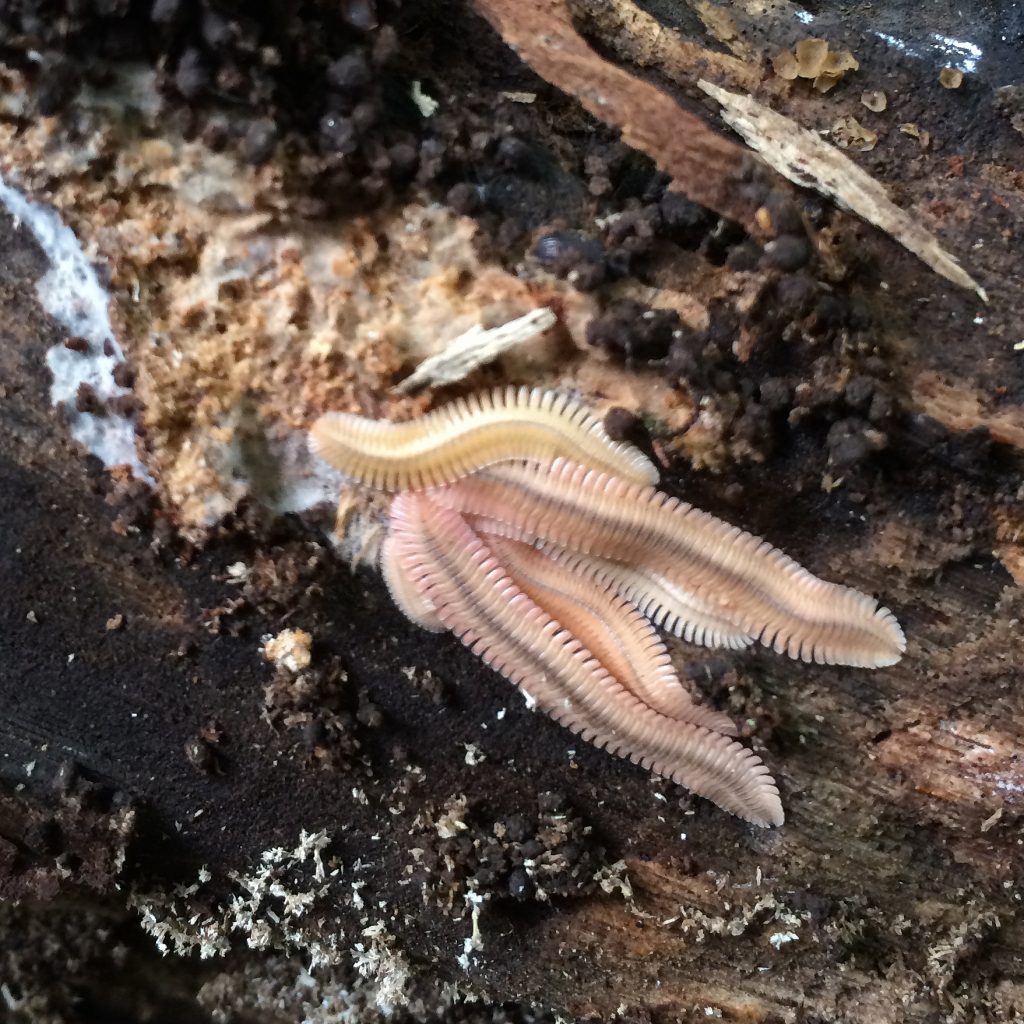
A quarter pinwheel of millipedes of the species Brachycybe lecontii Wood, 1864
A murder of crows, a murmuration of starlings…a pinwheel of millipedes? Last week, Dr. Matt Kasson, his student Cameron, and I went on an expedition to find the millipede Brachycybe lecontii. The picture shown above is an aggregation of about 15 individuals on a decaying piece of wood that we discovered in Buchanan County, Virginia (there are 10 or so small juveniles hidden beneath the adults). Often, Brachycybe are found in these aggregations where individuals are arranged radially with their heads facing a common center and tails diverging outwards (also shown here).
These millipedes are blind, slow-moving and eat fungus. They are also fascinating biologically:
- First, B. lecontii produces an unknown chemical secretion from serially arranged pores lining the lateral tips of its segments.
- Second, the species demonstrates exclusive male parental care of young. The males care for the eggs and the young by holding them ventrally in a basket formed by their many legs. There’s evidence that the males groom the eggs and clean them of fungus and bacteria.
- Third, B. lecontii are social and live in multi-generational clusters of individuals affectionately referred to as pinwheels.
- Finally, the genus Brachycybe lives in East Asia and North America, and in geological time the group’s evolutionary age predates the breakup of these continents.
References
- Brewer, M. S., Spruill, C. L., Rao, N. S., & Bond, J. E. (2012). Phylogenetics of the millipede genus Brachycybe Wood, 1864 (Diplopoda: Platydesmida: Andrognathidae): Patterns of deep evolutionary history and recent speciation. Molecular Phylogenetics and Evolution, 64(1), 232-242.
- Gardner, M.R. (1975) Revision of the millipede family Andrognathidae in the Nearctic region (Diplopoda, Platydesmida). Memoirs of the Pacific Coast Entomological Society, 5, 61 pp.
- Hasegawa, E., Yao, I., Futami, K., Yagi, N., Kobayashi, K., & Kudo, S. I. (2012). Isolation of microsatellite loci from the millipede, Brachycybe nodulosa Verhoeff. Conservation Genetics Resources, 4(1), 89-91.
- Kudo, S. I., Akagi, Y., Hiraoka, S., Tanabe, T., & Morimoto, G. (2011). Exclusive male egg care and determinants of brooding success in a millipede. Ethology, 117(1), 19-27.
- Shelley, R. M., McAllister, C. T., & Tanabe, T. (2005). A synopsis of the milliped genus Brachycybe Wood, 1864 (Platydesmida: Andrognathidae). Fragmenta Faunistica, 48(2), 137-166.

